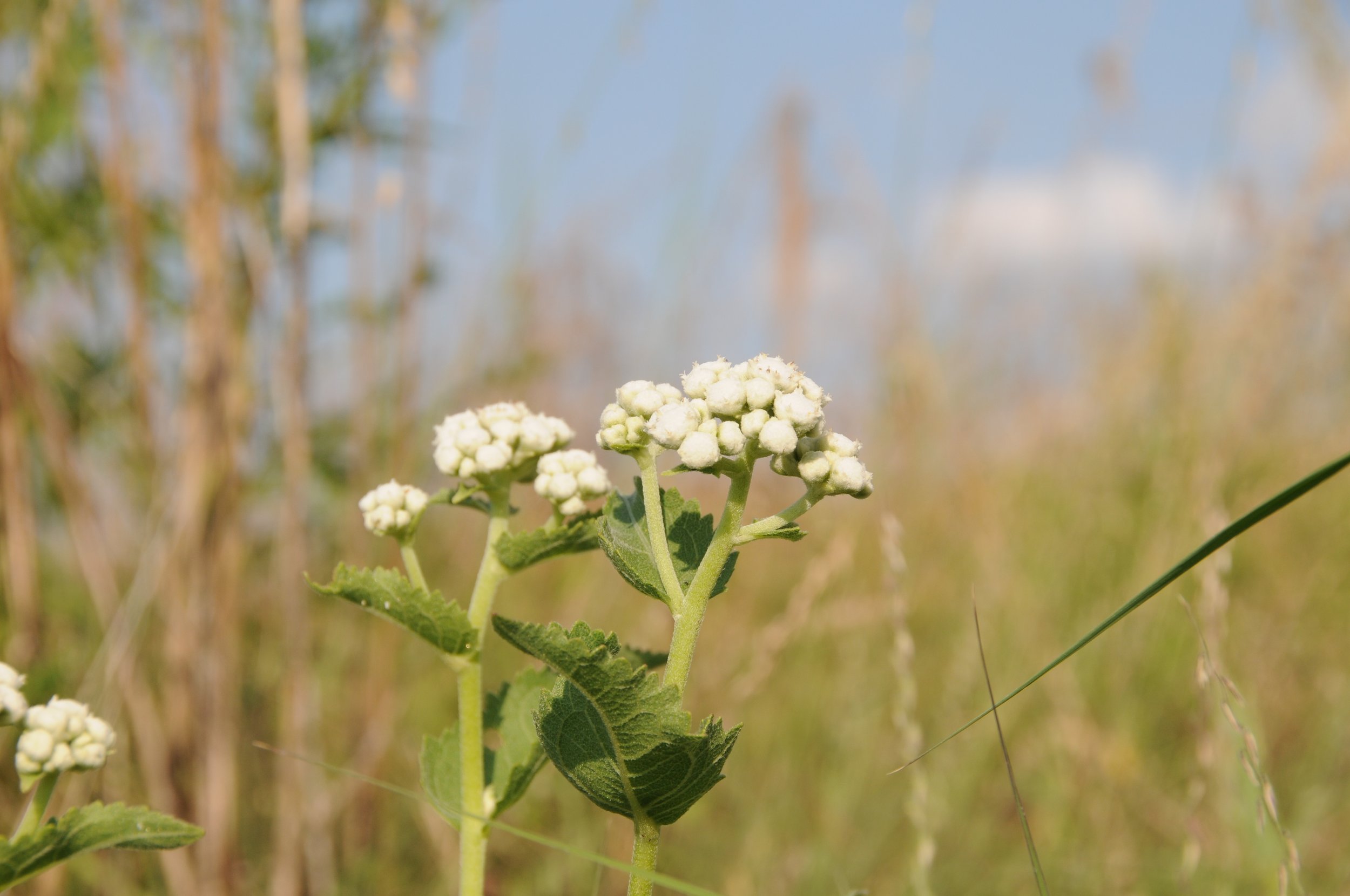8 Prairie Wildflowers to Find in 2025
Cream Gentian Gentiana flavida
I love finding this beautiful, unique plant. It likes to nest within the grasses, making it a part-shade lover. It doesn’t grow nearly as tall as its neighboring grasses and is easy to trample over when walking through the prairie if you aren’t careful.
Gentians offer exclusive access to their pollen to bumble bees, who have the perfect anatomy to creep into the top opening of the flowers. These petals don’t open—they stay folded up, protecting the pollen and seeds all season long.
Spotted Beebalm Monarda punctata
This plant smells so good, and pollinators know it because I have never stopped by this plant and not seen at least one pollinator hovering nearby.
Spotted Beebalm, also called Horsemint, is a well known medicinal plant. High in thymol, this makes it have anti-microbial and anti-bacterial properties.
Wild Quinine Parthenium integrifolium
Known in the herbal community as feverfew, this plant was used to help treat malaria in World War I. It often stays out of the ‘prairie limelight’ and isn’t always the first plant someone will know or see when they peruse through a prairie. It thrives and blooms in the hottest, most humid time of the year.
I often only find it in groups of one, two, or three, making it more elusive than some of the taller flowers the prairie offers.
Blue Vervain Verbena hastata
Another pollinator favorite, this unique-looking plant offers small and dainty purple flowers. One of my clients has a strong patch of this near her honeybee boxes—boy, do the bees love this! I can always find the honeybees here and take a pause to watch them do their thing!
White Wild Indigo Baptisia alba
I took this picture a little too late in the season, so the flowers are past, so just the seed pods remain. The flowers are white and vibrant on this wide bushy plant, reminding me sometimes of Foxglove flowers. This is a larval host plant to several native butterflies to Iowa, making it a place where I can almost always find a caterpillar in the summer!
White Sage Artemisia ludoviciana
Texture, color, and fragrance are three of many things White Sage brings to a prairie or landscape area.
This super aromatic plant is rabbit and deer-resistant and soft to the touch. It has fuzzy, milky white leaves and also offers a variety of medicinal properties used by Native Americans.
Golden Alexanders Zizia aurea
Probably one of the first flowers you will see in the spring, this low-growing yellow bloom is often mistaken with Wild Parsnip, which often blooms a bit later. Parsnip grows much taller and Golden Alexanders have a sharper leaf shape. I can assure you this plant is much safer and won’t leave your hands with blisters (just be sure it isn’t Wild Parsnip, first!).
This is a host plant for the well-loved Swallowtail Butterfly and is a great seed to mix into erosion/hillside projects as it has a robust root system to help hold soil.
Butterfly Milkweed Asclepias tuberosa
I’m sure you’ve heard it a thousand times before: butterfly milkweed is a host plant for the monarchs! But ALSO important: it’s orange! There aren’t many orange flowers on the prairie, and this one staying lower and nested creates such a beautiful, scenic feel amongst the taller blooms.









